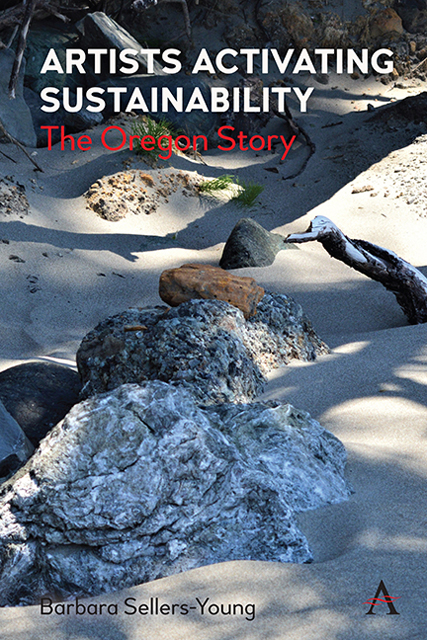Book contents
- Frontmatter
- Dedication
- Contents
- Acknowledgments
- List of Figures
- Introduction: Art, Environment and Metaphor
- 1 Environmental Activism, Arts and the Land of Eden Landscape One: High Desert Basin and Range
- Landscape One High Desert Basin and Range
- Landscape Two Columbia Gorge and Plateau
- Landscape Three Cascade Range
- Landscape Four The Willamette Valley
- Landscape Five Rogue River Valley
- Landscape Six Oregon Coast and Coast Range
- Index
3 - Ontario: The Legacy of Kanriye Fujima
Published online by Cambridge University Press: 10 January 2023
- Frontmatter
- Dedication
- Contents
- Acknowledgments
- List of Figures
- Introduction: Art, Environment and Metaphor
- 1 Environmental Activism, Arts and the Land of Eden Landscape One: High Desert Basin and Range
- Landscape One High Desert Basin and Range
- Landscape Two Columbia Gorge and Plateau
- Landscape Three Cascade Range
- Landscape Four The Willamette Valley
- Landscape Five Rogue River Valley
- Landscape Six Oregon Coast and Coast Range
- Index
Summary
America will be my teacher.
Kanriye Fujima (1924–2015)Located at the edge of the High Desert Basin and Range region of Malheur County, Ontario, Oregon, is at the confluence of the Snake, Malheur, Owyhee and Payette Rivers. It was initially the home of the Northern Paiute who hunted the high desert country and fished in the rivers. Each tribe of the Northern Paiutes occupied a specific territory, generally centered on a lake or wetland that supplied fish and waterfowl. Communal hunt drives, which often involved neighboring bands, would focus on rabbits and pronghorn. Individuals and families appear to have moved freely among the bands. The Northern Paiute were displaced by settlers on their way to western Oregon who decided to settle in what has become known as Treasure Valley.
Settlers began arriving in Ontario in the late 1800s. Ontario built a post office in 1883. Not long after in 1884, a short line railroad was built, and Ontario became the shipping point for eastern Oregon cattle ranchers to markets on the west coast. The completion of irrigation projects, the Nevada ditch in 1881 and the Owyhee ditch in 1890, from the Snake and Owyhee Rivers, made agriculture in this semi-arid climate possible. The region became known for growing onions, sugar beets and potatoes as well as alfalfa hay, alfalfa seeds, carrots, milk, peppermint oil, wheat and grains. Ontario became the home of Treasure Valley Community College in 1962.
Riye Hideko Fujita was born in 1924 in Yamaguchi, Japan, hear Hiroshima. She was trained in classical Japanese dance, Nihon Buyô, under the traditional iemoto system in Japan from the age of six. Her education was comprised of a rigorous schedule of lessons that began after the end of her regular school day. Her training was originally in both music and dance—she played the three-stringed samisen—but eventually she focused on dance. During World War II, she became part of the Japanese government's military propaganda as a performer for state-sponsored programs. After the war ended, she resumed her dance studies, and following tradition, served as a cook, housekeeper, baby sitter and maid in her teacher's home.
- Type
- Chapter
- Information
- Artists Activating SustainabilityThe Oregon Story, pp. 61 - 72Publisher: Anthem PressPrint publication year: 2022

